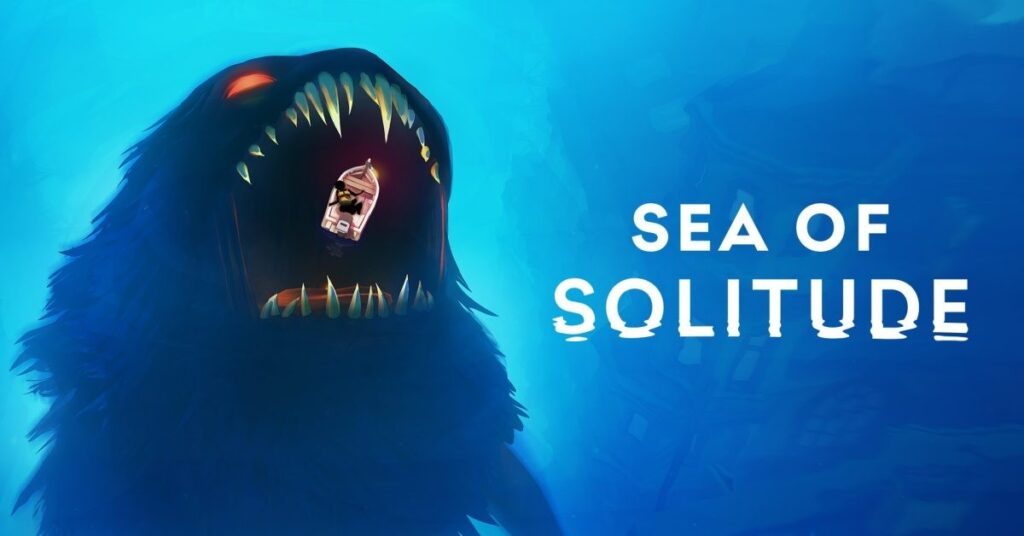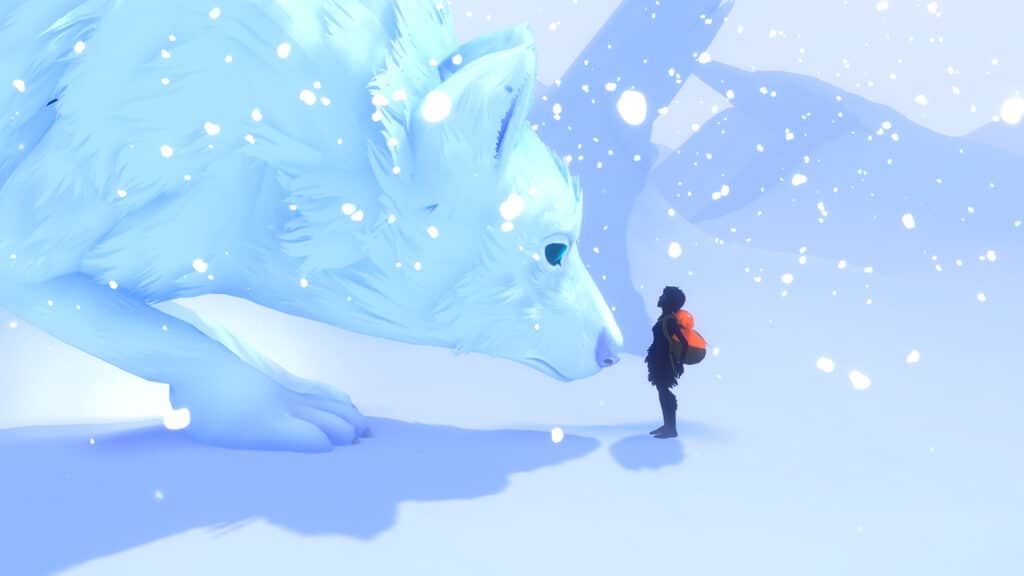Sea of Solitude was first released by Jo-Mei and Quantic Dream all the way back in July 2019. Now the game is back with a Director’s Cut that promised new features and enhancements just for the Nintendo Switch. Let’s face it, the world has changed somewhat since it was first designed. Yet, this little game feels more relevant than ever with its themes of depression, loneliness, and confusion. But don’t let that put you off. This title is all about unity; it’s about recognising when you are wrong, helping others, and subsequently helping yourself. Sea of Solitude – The Director’s Cut is an excellent attempt at exploring mental health in gaming. Whilst its not perfect, it still manages to create emotional moments and navigate complex narratives.
Quick note, I did not play this game when it first came out so forgive me if this is a bit of an overall review rather than specifically about Sea of Solitude – The Director’s Cut. You can watch the announcement trailer from Nintendo below before we get going.
A Girl and Her Boat
The game opens to a wide, wide sea and a small boat humming away on the waves. At its tiller is Kay a young shadow of a woman who needs to face her demons. You steer Kay towards a sunken town with a beautiful colour scheme contrasting blue ocean and orange brick.
But not everything is as its seems, which you should be able to guess from Kay’s voice-over. Its not long before you realise that you are not alone. The opening includes two new faces, the first is a strange, friendly floating girl who offers to help you on your journey. The other is slightly less welcoming and blocks your way. She, it is revealed, is in fact a monstrous version of Kay. Something has happened to turn her into a creature of loneliness. So other Kay must explore the world around her to understand how this occurred.
However, Kay is not a fully-fledged monster of her own creation. She has a past heavily influenced by the ones she loves. They too now manifest as demonic animals who are angered at her lack of understanding towards them. You must help Kay navigate the waters around her, traversing sunken buildings, to truly understand the lives of others. Only then can she finally be free of the solitude surrounding her.
Sea of Solitude – The Director’s Cut is an incredibly emotive narrative that definitely tugged at my heartstrings. Watching Kay’s understanding of the world slowly unravel as she sees it from other’s perspectives makes you question your own reality. What do you take for granted in your life? Who do you take for granted? Whose struggles might you be overlooking?
Do You Hear That?
The game makes great use of audio to that affect too. As you explore, there will often be voice overs of previous conversations Kay has overheard or been part of. These are then contrasted with the things she didn’t hear. Such as her brother being bullied after she told him everything would be OK at school. This is a very powerful dynamic which is only enhanced by the soundtrack. From soft piano melodies to swelling string numbers, the audio in this game is carefully utilised to encourage an emotional response in the player. I’m not ashamed to say I welled up in a couple of places. But sometimes its the silence that gets you hardest. Those moments when Kay is completely alone and there is no sound just increase your awareness of how isolated she has become.
Mental Health in Gaming
You can’t really talk about Sea of Solitude – The Director’s Cut without looking more closely at mental health in gaming. Gaming and mental illness have a long history, and not all of it is a good one. In the past there have been plenty of games (just as in all media) that have used mental health problems in their villains or enemies. This is not a great thing to do. It promotes the idea that all unwell people are violent or bad.
More recently things have started to change. Games are starting to explore mental health in a way that encourages a more complex understanding of conditions. They are also painting a more diverse picture of those who suffer from mental illness. Sea of Solitude – The Director’s Cut definitely falls into this second category. In fact, we included the original version on our Four Games That Handle Mental Health Right list last year. Just as Hellblade developers worked with professionals to better understand psychosis, Sea of Solitude comes from a place of personal understanding. Writer Cornelia Geppert spoke at length before the game’s initial release about the real-life influences on the game.
“Sea of Solitude is the most personal game I’ve ever made so far. I started writing it when I felt the loneliest, in both my private and working life. I needed to let that out. It was really bursting out of me. I started writing down the first lines of the story, and the result is all this you see here, the game. But it’s not completely my thing, of course. It’s a team effort. Everyone who’s worked on it contributed.”
Cornelia Geppert in interview with Venture Beat
Throwing Punches
From how I have discussed Sea of Solitude – The Director’s Cut so far, it would be fair to see it as a walking simulator. So we should probably discuss the game’s mechanics a little closer to see what makes this is more of a platformer than a walker. Sometimes, during gameplay, you’ll become blocked from your goal either by a closed gate, an immovable monster, or water levels dropping too low for your boat. In these instances, you’ll need to find a path to your destination by climbing and interacting with some world elements. Not only that, but sometimes you will be hounded by little shadow children who will attack you if they get too close. You’ll need to work out a path to evade them or, occasionally, how to turn them light using a flare.
Now these elements are where the game starts to have problems for me. Given this is a new version, I would have expected them to be cleared up from the original but, apparently, they are the same issues. First off the puzzle element does not evolve in any way. You are still pretty much repeating the same stuff in the last chapter as you were in the beginning. I know this is a much more narrative-driven than a puzzle-driven game but the fact is that it is still a game and needs to be engaging to play as well as watch. After a while, it can feel a bit monotonous which is a shame given how great other parts are.
As I mentioned, sometimes you will be chased by small demons whilst trying to move through certain locations. Although this does shake up things a bit and can raise the heart rate, it can also be frustrating. There is no way to dodge which means when you have to be in close quarters to the little monsters, they can easily swarm you. They then attack you and you have to start for a save point. This is a pretty small bug-bear to be honest, but it’s one that detracts from what the developers were clearly trying to do.
Made For Switch
So let’s talk about what’s new in Sea of Solitude – The Director’s Cut. According to Nintendo’s Store, there are a handful of pretty big changes.
- An emotional adventure — Sea of Solitude: The Director’s Cut takes you on a beautiful and heart-pounding action-adventure with Kay, a girl so hopeless that she has turned into a monster. Guide her through the tempest towards tranquility as she faces off against relentless beasts of her own making who want to see her capsize and drown, unless she can summon the inner strength to face them.
- A beautiful and troubling universe – Set in a fantastical drowned world, explore the unique and ever-changing environments by swimming, running and navigating, encountering monsters and overcoming challenging obstacles along the way.
- Only for Nintendo Switch™ — With features exclusive for Nintendo Switch™, immerse yourself in the world of Sea of Solitude: The Director’s Cut with a customizable photo mode, gyroscope integration, and more that brings the director’s vision to life like never before.
- Updated from 2019 version – The Director’s Cut features a rewritten script, a new cast of voice actors, and augmented cut scenes and animations that convey the narrative and gameplay experience in the most complete way.
So as you can see, the Director’s Cut is a massive overhaul of the original game. I think moving it on to Switch is actually a really good idea. Handheld consoles create a much more intimate gaming atmosphere which adds to the emotional connection the developers were clearly going for. Not only that, but it allows the player to game in a more comfortable manner rather than in front of a TV or monitor. It allows them to choose an approach to these complex themes and ideas that suits them.
Verdict
In conclusion, Sea of Solitude – The Director’s Cut is a fantastic little game that benefits greatly from its new home on the Switch. Although there are issues with some of the overall mechanics and you may see some graphic glitches from time to time, it excels in its storytelling, dialogue, and soundtrack. Its refreshing to see a game honestly explore wider themes of mental illness, whilst also remaining hopeful. It reminds us that we should reach out to those who might be struggling. But more than that, also be ready to ask for help ourselves, should we need it.

Summary: Playing as Kay, you must traverse the waters of a beautiful sunken city in a small boat. But be warned, you are not alone and the only way to progress is to face your demons of the past.
Genres: adventure, linear, action, platformer
Platforms: Nintendo Switch (Review Version),
Developers: Jo-Mei Games
Publishers: Quantic Dream
Initial release date: March 4th, 2021
Have you played Sea of Solitude? Are you excited for the Director’s Cut? Let us know in the comments.
You can also get even more content on our YouTube channel. Thanks for reading VeryAli!

Good job! Please give your positive feedback 😏
How could we improve this post? Please Help us. 💡
Martha has history in editing and producing top-quality content for websites and organizations. I have previously worked as a student researcher during my time abroad where I explored the nature of grief in adolescents, whilst also working part time for the Electives Network as their Copywriter and Content Developer. In my last year of university I was an editor for the university newspaper for the arts supplement and I work as a news writer at VeryAli Gaming making sure you stay updated with the latest and greatest in Gaming industry.







